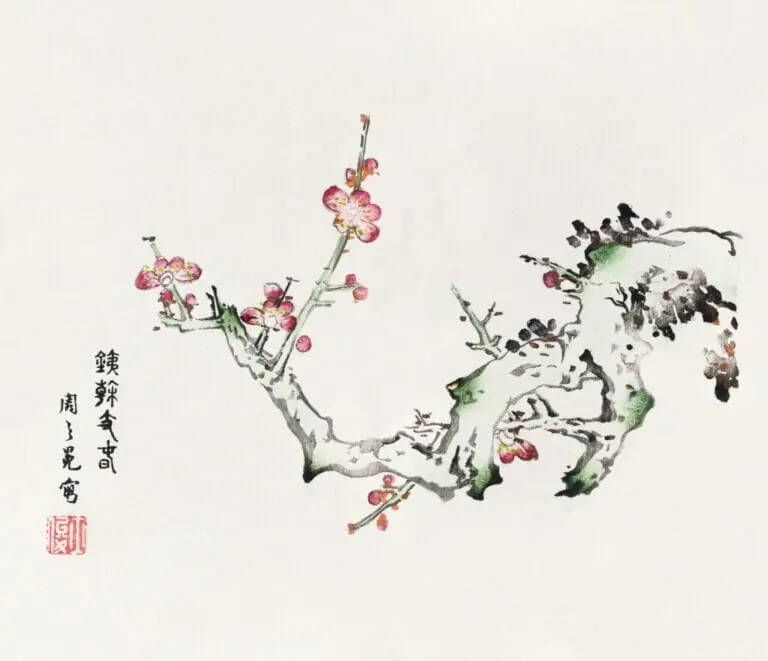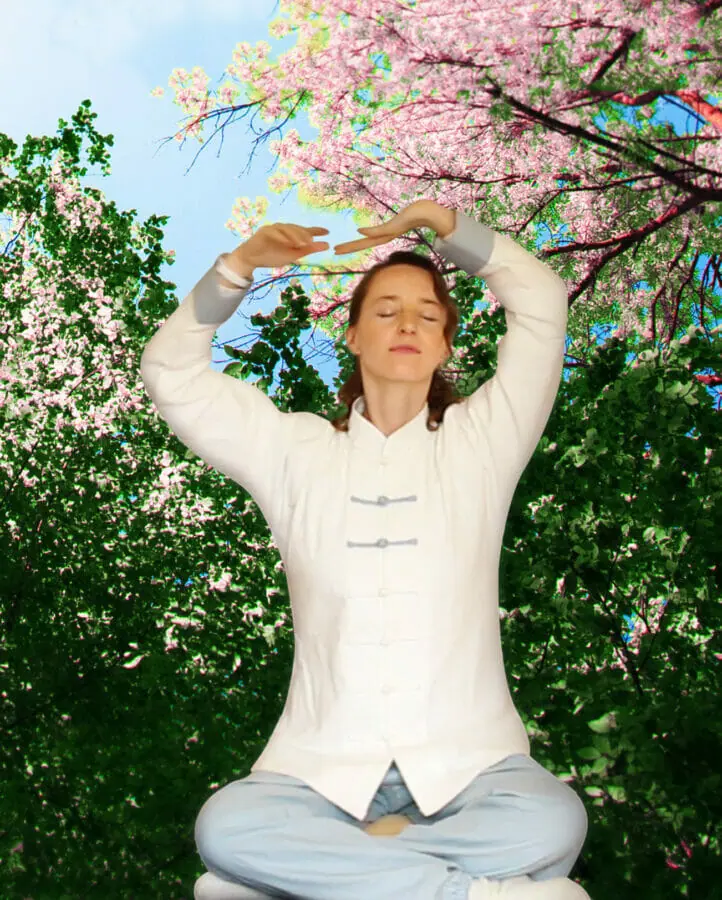The Art of No Effort
In Tian Tao, the goal is to achieve the greatest result with the least amount of effort. However, we tend to do too much, even if we inherently like the idea of being allowed to be lazy. Even in everyday life, physical actions often use too much energy because they are not economical from the body‘s point of view and/or tension interferes with natural movement patterns. Therefore, in the initial phase of Tian Tao practice, it can sometimes seem exhausting not to exert oneself.
The patterns that tempt people to go beyond their own limits are often anchored in the body’s memory from a young age. The idea prevails that we have to do something 100 percent correctly to achieve the desired result. Competitive situations from sports and the awarding of grades for good performance are also stuck in our heads. These aspects have their justification in their own fields, but in Tian Tao they set the course in a direction that is not beneficial. Exercise practice is not a competition – it is not about beating someone or winning a medal.
Being lazy does not mean doing nothing but letting go in the doing. The focus is on a certain inner attitude during practice, a peculiar state of suspension between engagement and detachment. Instead of striving for perfect execution, we observe different reference points within the movement and bring our attention back to them again and again.
It is also true that the movements do not have to be extended to be effective. The energetic substance of the exercises builds up slowly during the first phase of the exercise sequence.

Those who perform the movements too large too quickly leave the realm of the art of energetic movement – they are generally doing pure exercise. The intention is that the amplitude of the
movements gradually increases on its own, while maintaining the energetic feeling.
Therefore, while practicing, we should always ask ourselves whether we are trying too hard or if we can do less. After a few weeks or months of practice, it often becomes clear that much less effort is necessary than previously believed. This realization leads to a deeper and more intense experience
of the respective exercise and a serene feeling of ease.

Preparation, Duration and Regularity
Tian Tao can be practiced anywhere and at any time. You don‘t need any elaborate equipment or special clothing, just yourself. The need for space is also minimal for most exercises, making the practice a straightforward affair. A positive side effect of practicing is that not only we ourselves but also the rooms in which practice takes place are harmonized, regardless of whether they are living rooms, a hotel room or an office. Rooms where a lot of practice takes place radiate a pleasant and clear atmosphere.
There are no rules regarding the duration of the exercises. What is crucial, however, is regularity, because the exercises have a cumulative effect, i.e., they build up. It is recommended that you start with a few minutes a day and gradually increase the amount of time, rather than setting the bar too high and then giving up in frustration. Even short exercise periods have an excellent effect when they are part of a regular exercise routine.
This approach is very different from the way exercise is done in a gym, for example. In a work-out, the goal is to work the body through once or twice a week with considerable effort – and recover from it during the remaining days. Tian Tao, on the other hand, focuses on setting gentle impulses, on a daily basis to the extent possible, constantly filling the energy reservoir and finding a source of tranquility from which to draw. If sufficient time is available, it is advisable to practice at least until the initial resistance has subsided and a calm, peaceful feeling spreads within. For experienced practitioners, after a certain amount of time, additional energetic sensations occur, signaling that the exercise is having its effect. Then it can either be stopped or continued to reach an even deeper level.
Generally speaking, exercise times of 10 to 20 minutes have a balancing and toning effect. An exercise duration of 20 to 40 minutes makes it possible to work on physical problems and their causes more intensively and to open the energy channels more strongly. With a duration of 40 to 60 minutes, a range is reached that allows the spiritual potential of the exercises to unfold to a special degree. Of course, it is possible to practice even longer and to explore in depth the transformational possibilities that Tian Tao offers. However, this should only be done if it develops organically and not out of false ambition.
The exercise times can be flexibly arranged. Practicing in the morning has the advantage that the energy is available for all activities during the day. Practicing in the evening helps to balance accumulated stress and leave it behind. Therefore, it is also useful to divide the exercise program by doing part of the exercises in the morning and at noon and another part in the evening. If now and then you miss a day or two of practice, that is not a problem. With longer breaks, however, you will notice that it is more difficult to get started and energetic potential must first be built up again. Therefore, on busy days it is advisable to still practice for at least 5 minutes, as this time helps to maintain the continuum. Over the years, students have repeatedly confirmed that it makes a big difference whether they practice for just a few minutes or not at all.

Essential Principles
The special effectiveness of the Tian Tao exercises is based on some essential qualities and principles that balance body, mind and spirit alike. Among them are spontaneity, circularity and slowness.
Spontaneity – Invitation to self-regulation
»Life consists of a series of spontaneous changes.
If you resist them, you will only create suffering.
Let reality be as it is. Allow things to flow
naturally in their own way.«
Lao Tzu
Usually we are not aware of the spontaneous movements that take place in the body. At any given moment, certain areas of the body are moving automatically and completely without our intervention: the heart beats, the breath comes and goes, the stomach and intestines perform peristaltic movements – if these movements were to stop, it would result in death.
Spontaneous movements do not simply maintain the basic functions of the body. They also serve a self-regulating function for the body to regain its inner balance. Numerous examples prove this: When the body is tired, we yawn or stretch the spine, when the eyes are dry, blinking helps, or we cough when something in the throat is scratchy. Normally, this form of spontaneous movement only takes place in the muscles directly affected. The spinal rejuvenation exercise includes phases during which the body can move spontaneously – out of an inner impulse – to bring about healing at a deeper level.
To enable spontaneous movements, the only thing you need to do is to stand there and let go. We slip into a state of complete relaxation without intending anything in particular. If this succeeds and impatience does not lead us to force movements hastily, the moment will come when the body begins to react internally and externally. Externally this happens through smaller or larger movements, which can become noticeable as rocking, swaying, twitching or stretching, and internally through sensations of warmth, tingling, flowing, sometimes also cold and wind or a feeling of expansion of the body surface.
Spent or non-beneficial energies can be expelled through the feet and hands during this process, recognizable by a temporary change in the color of the skin. When certain basic cleansing has already taken place, the movements of the body are increasingly carried by a kind of superior energy flow. The feeling of spontaneity can, with a careful approach, be maintained even when the movements become larger and lead to more concrete forms or sequences.

Introduction to the Practice
Fanning Internal Flames – Gathering Energy from Heaven
This simple breathing technique builds up the energy store in the innermost part of the body and provides the body and mind with increased mental power. The peculiarity of breathing is that it is not actively generated, but is created passively through the movement of the abdomen and the body.
It generates heat in the lower abdomen and massages the internal organs.
The exercise is performed while sitting on a cushion, stool on the floor or a chair. If you are sitting on a cushion, loosely cross your legs. If you are practicing on a chair, make sure that your spine can move freely. The legs remain parallel and the soles of the feet rest flat on the floor.

Note
This is a short part of the book “Tian Tao Yoga: The Pearl of all Self-Healing and Longevity Techniques from the Far East”, which you can buy here.
“Tian Tao Yoga is a powerful technique of regeneration and self-healing that was practiced secretly in China‘s monasteries until the Cultural Revolution.
One of the special features of this gentle yet powerful method is that it is easy to learn and does not require any special athleticism or agility. This makes it possible for older people or those with limited mobility to practice the exercises. Body, mind and soul are effectively revitalized and aligned on a deep inner level.
In this book, Julia Kant provides insight into the practice, philosophy and history of these once closely guarded techniques. She reports on her own path to Tian Tao as well as on the amazing experiences of many practitioners. The basic level exercises, presented with numerous illustrations, can already show profound effects if practiced regularly.
The book also contains an exercise guide with valuable tips and explanations based on experience from many years of teaching and hundreds of seminars. It can serve as a useful companion.”
About the Author
Julia Kant, born in 1978, studied Tian Tao Yoga in the direct line of Chinese Master Ho Lo and is the founder of the Tian Tao Yoga School of Europe. She has taught this technique to hundreds of people through seminars and private sessions. Julia is the only teacher who teaches this Chinese pearl of healing nowadays.
Julia is available for private sessions in Berlin and other cities before and after workshops. For those who are not able to come to see her in person she offers Zoom Sessions. She also offers Webinars.
Contact: info@tiantao-yoga
